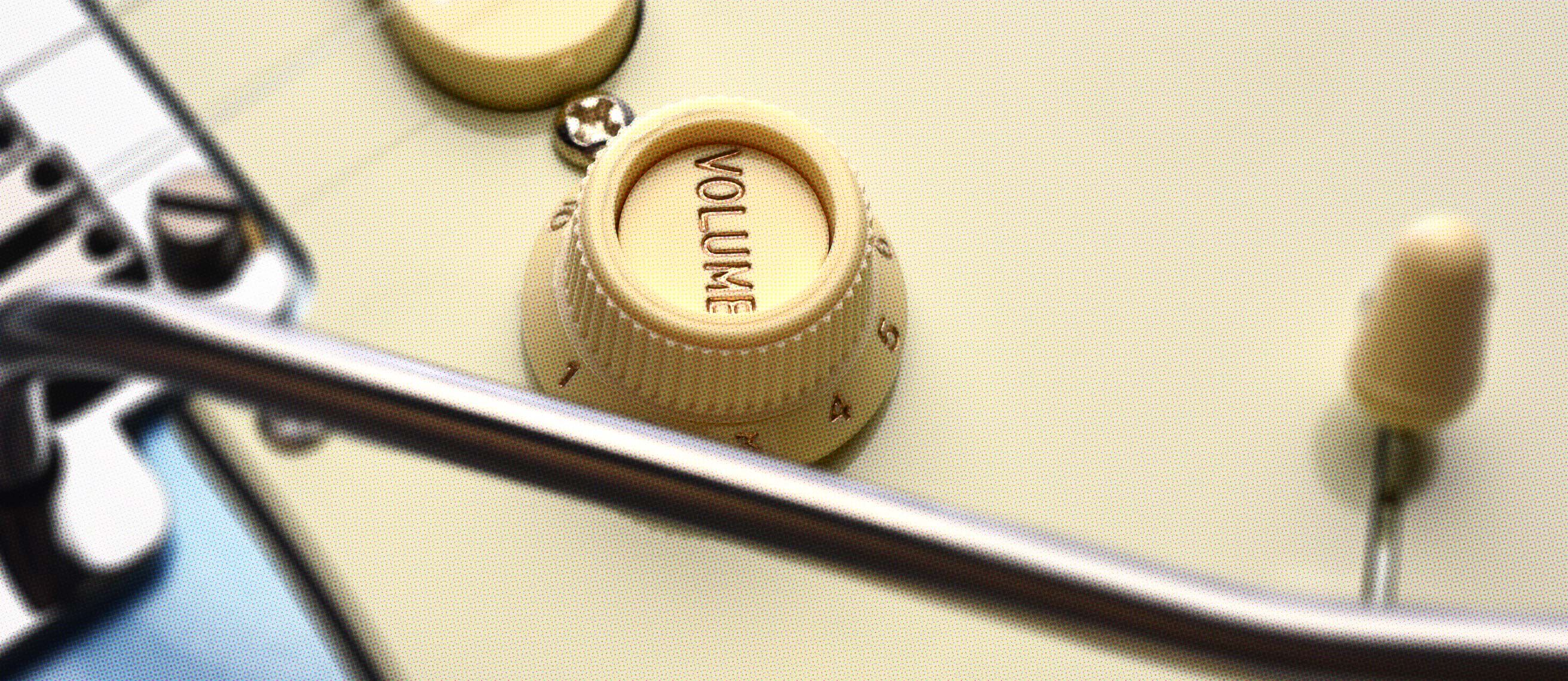2 Min ReadBy Jeff Owens
How the S-1 Switch Gives You More Tonal Options
Learn about the new world of sound the S-1 switch can open up.

What does an S-1 switch do on Fender instruments equipped with it?
The short answer is that it gives you more tonal options by offering extra pickup-wiring configurations. Further, S-1 switching does this without significantly altering the appearance of an instrument, because it’s a “push” switch built into a single volume or tone control knob. Consequently, instruments with S-1 switching don’t look notably different than instruments without it.
The tricky thing about explaining S-1 switching is that it does different things on different instruments. That’s sensible enough, since different instruments have different pickups, different pickup configurations and different wiring schemes. S-1 switching on a Telecaster, for example, must be different from S-1 switching on a Stratocaster.
Not only that, but S-1 switching can vary from model to model within the same instrument type. S-1 switching on an American Elite Telecaster, for example, differs sharply from S-1 switching on a Classic Player Baja Telecaster. More on all this shortly.
And not only does S-1 switching do different things on different instruments, but it has done different things at different times. That is, it doesn’t necessarily do the same things today that it did several years ago. S-1 switching has been around quite a while, after all—it first appeared in summer 2003 and was offered on several Fender instruments throughout that decade; even on some Precision Bass and Jazz Bass models.
To answer the question more specifically, then, here’s what S-1 switching does on several Fender guitar models currently equipped with it:
American Elite Stratocaster
As has been the case for decades, the five-way selector of the Stratocaster offers a slew of wiring configutations. But with the S-1 switch, there is a new world of options. Here is the configuration when the S-1 switch is off:
Position one: bridge pickup only
Position two: bridge and middle pickups wired in parallel
Position three: middle pickup only
Position four: middle and neck pickups wired in parallel
Position five: neck pickup only
When you engage the S-1 switch on the American Elite Strat, you have even more tone alternatives that you don't get to hear every day.
Position one: all three pickups wired in series
Position two: bridge and middle pickups wired in series
Position three: middle and neck pickups wired in series
Position four: bridge and neck pickups wired out of phase, with a special tone capacitor
Position five: bridge and middle pickups wired in series and out of phase, in parallel with neck pickup
American Elite Telecaster
With a three-way selector and only two pickups, the American Elite Telecaster is simpler than the American Elite Stratocaster.
When the S-1 switch is off, you have:
Position one: bridge pickup
Position two: bridge and neck pickups wired in parallel
Position three: neck pickup
And when you turn on the S-1 you get:
Position one: bridge pickup
Position two: bridge and neck pickups wired in series
Position three: neck pickup
Classic Player Baja Telecaster
The Classic Player Baja Telecaster is a specialized Telecaster model with a four-way blade switch rather than the three-way switch typically found on most Telecasters. Without engaging the S-1 switch, the first three blade switch positions deliver standard Telecaster wiring, with a special in-series fourth position that creates a thicker tone with more output. Like so:
Position one: bridge pickup only
Position two: bridge and neck pickups in parallel
Position three: neck pickup only
Position four: neck and bridge pickups in series
Engaging the S-1 switch on this particular Telecaster introduces out-of-phase circuitry to blade switch positions two and four only, with positions one and three remaining unaffected. This produces a thinner and more-hollow tone of the kind often heard in, for example, funk and early electric blues. Like so:
Position one: bridge pickup only
Position two: bridge and neck pickups in parallel and out of phase
Position three: neck pickup only
Position four: neck and bridge pickups in series and out of phase
James Burton Telecaster
The flame-finished James Burton Telecaster presents yet another Telecaster S-1 switching scheme, as it has three specially designed pickups with special “Strat-o-Tele” five-way blade switching. Without engaging the S-1 switch, here’s what this specialized Telecaster’s blade switch delivers:
Position one: bridge pickup only
Position two: bridge and middle pickups in parallel
Position three: bridge and neck pickups in parallel
Position four: middle and neck pickups in parallel
Position five: neck pickup only
Engaging the S-1 switch on the James Burton Telecaster introduces series circuitry for blade switch positions two and four only, with positions one, three and five remaining unaffected. Like so:
Position one: bridge pickup only
Position two: bridge and middle pickups in series
Position three: bridge and neck pickups in parallel
Position four: middle and neck pickups in series
Position five: neck pickup only
The S-1 switch built into the volume knob of the Deluxe Roadhouse Stratocaster bypasses the preamp.
When not in use, the S-1 switch doesn’t affect standard Stratocaster wiring, which is:
Position one: bridge pickup only
Position two: bridge and middle pickups wired in parallel
Position three: middle pickup only
Position four: middle and neck pickups wired in parallel
Position five: neck pickup only
The S-1 switch offers five additional pickup wiring options when engaged:
Position one: all three pickups wired in series
Position two: bridge and middle pickups wired in series
Position three: middle and neck pickups wired in series
Position four: bridge and neck pickups wired out of phase, with a special tone capacitor
Position five: bridge and middle pickups wired in series and out of phase, in parallel with neck pickup
Don’t miss out!
Be the first to know about new products, featured content, exclusive offers and giveaways.


